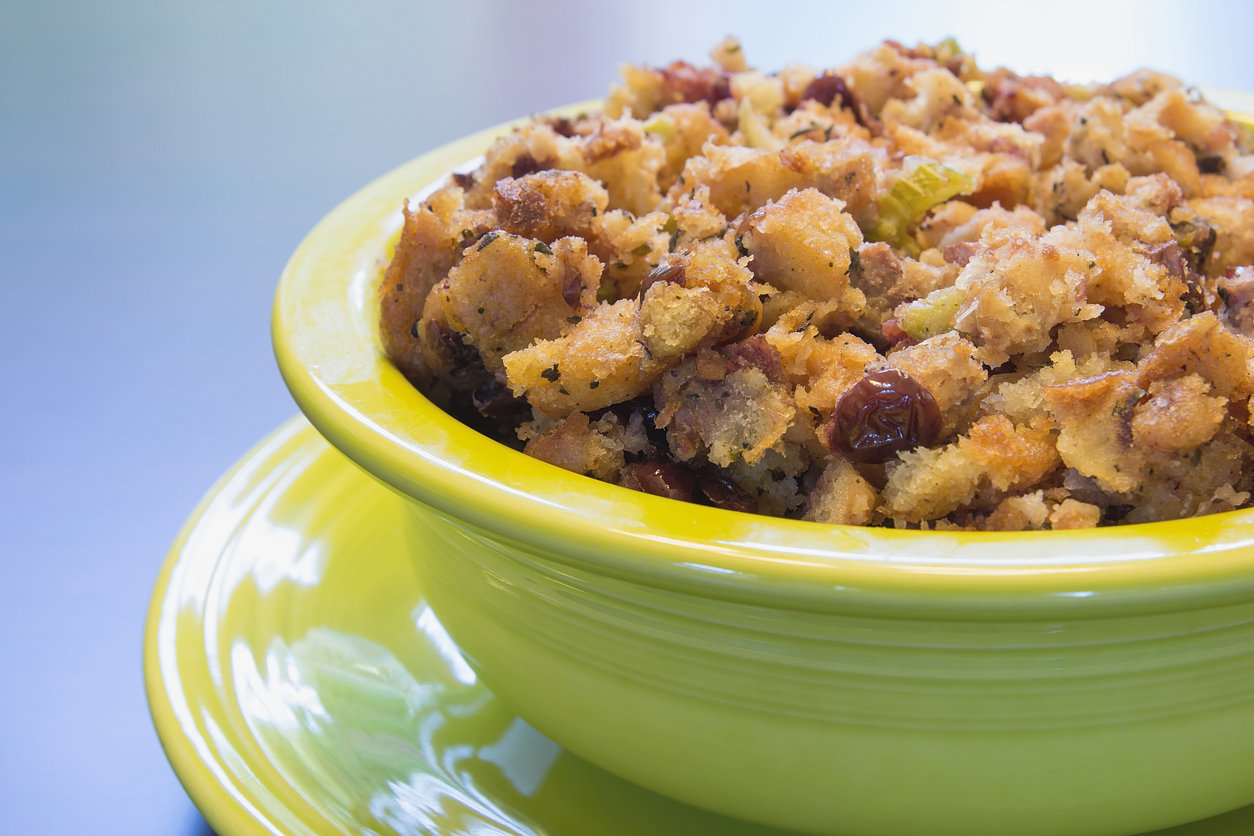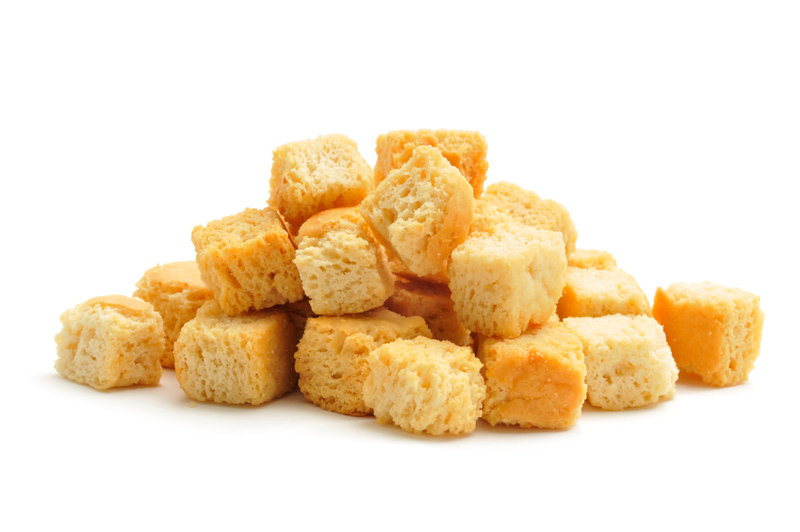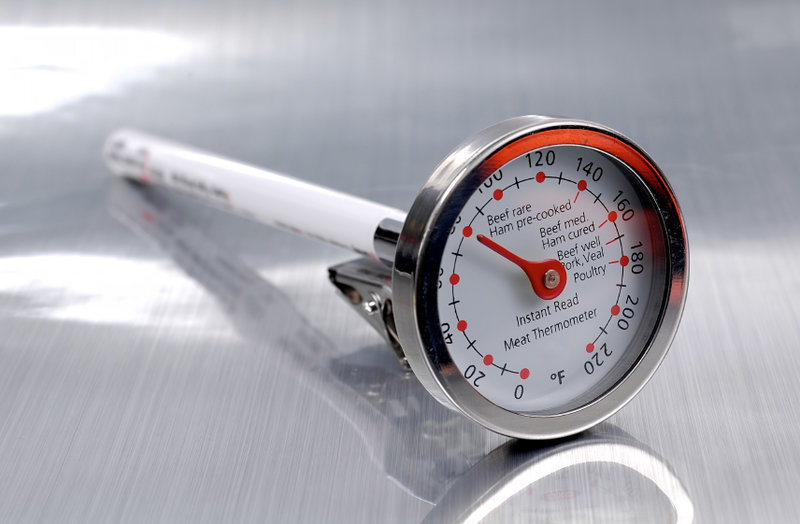In my family, Thanksgiving stuffing isn't exactly a science. It usually comes from a bag, gets cooked in whichever way the instructions say we're supposed to cook it, and then the flavor doesn't matter because it's doused with gravy. With that said, I feel sort of bad that we haven't given the stuffing the attention it deserves the past, oh, 20 years or so. The hard truth? Homemade stuffing is totally amazing. Heck, it can be fantabulous! I've seen the light — and that light is homemade stuffing.
The only catch? One just has to go about making it the right way.
Stuffing may be up there with the most favorite parts of Thanksgiving dinner. Turkey is kind of over, and mashed sweet potatoes are great and all, but how often do we get the amazing flavors that make up a superb stuffing? Not often. And that's because a lot goes into making it, which is exactly why it's got to be perfect on the one day of the year that stuffing is the star.
More from CafeMom: 15 Surprising Thanksgiving Leftovers That Freeze Perfectly
Here are 15 mistakes not to make in order to get stuffing to become a beloved tradition of making homemade. We also have tips on how to make it flavorful and enjoyable for all, and to get that crispy top that all the relatives will be raving about.
More from CafeMom: 13 Cringeworthy Stories of When Thanksgiving Went So, So Wrong

You use fresh bread.

Fresh bread is great to soak up the gravy and to make turkey sandwiches the next day, but it's not the best idea when it comes to making the stuffing. A stale bread takes in the flavors and ensures the stuffing isn't mushy. If you made the mistake of not drying out your bread first, get it into pieces and give it 45 minutes in the oven at 275 degrees.
You use dry herbs.

Dried herbs from the grocery store isn't disastrous, but it does change the taste of your stuffing. Fresh herbs give it that wondrous unforgettable taste, while the dried stuff may make it taste more like boxed stuffing. Also, be careful to use correct ratios when it comes to stuffing recipes depending on if you are using dry or fresh herbs. If a recipe calls for fresh herbs, you will use 1/2 as much if you use dry herbs.
More from CafeMom: 10 Reasons to Keep Pawning Off Thanksgiving On Your Relatives
You aren't mindful of allergies.

A lot of excitement goes into making stuffing, as well as a lot of ingredients. Many of us have milk, egg, nut, and gluten allergies and these are things often found in stuffing. There are many great recipes out there without these items in there, so just check with all your guests first.
You overcook it.

Overcooking stuffing means it will be very dry. Undercooking, however, isn't great either — it could be too soggy. With stuffing you have to get it just right. If you are making stuffing to bring with you to someone else's house for Thanksgiving, undercook it just a bit so when you pop it in the oven to heat up once there, it doesn't dry out.
More from CafeMom: 19 Easy Thanksgiving Sides Made in 30 Minutes or Less
You take the lid off too soon.

Many of us love a crisp topping on stuffing — with the rest of it moist, of course. To get a crisp top, remove the lid or cover on the stuffing before it finishes the cook. The last 10 minutes of cooking is usually best with the lid off to get this crunchy top without drying out the whole dish.
You make it ON Thanksgiving.

If you're making your stuffing from scratch, the bread you're using needs time to dry out. If the bread is more than a day old, then it will be stale, better for use, and your stuffing won't dry out.
You try to make it 'skinny.'

Oh come on, Thanksgiving happens once a year. If you try to reduce the amount of butter you use for your stuffing recipe, you'll be majorly sacrificing on taste.
You cut up the bread with a knife.

It may seem efficient to turn the bread that's going to become the stuffing into perfect little cubes with a knife, but this actually works against you. Ragged pieces of bread have more surface area and offer a better texture.
You add all the stock at once.

Because you want the texture of the stuffing to be just right, you need the bread to be both crispy and soft. For that reason, you'll do well to add chicken stock a little at at a time (1/2 cup to 1 cup) as opposed to all at once. Wait for bread to soak up the broth before adding more. Then when the bread is moist (but not drowning!), it's done.
You skip the all-important 'binder.'

There's really no end in sight to to the number of variations on the standard stuffing recipe. You can add all different ingredients, from dried fruit to sausage, nuts, etc. But one thing needs to remain constant: a binder. Without it, the stuffing won't stick together. So even if you're shooting for a low-carb or gluten-free version, you need to have bread or something like bread — which, when it soaks up moisture and breaks down, acts as a glue for the rest of the dish.
More from CafeMom: Thanksgiving Hacks to Make Your Holiday Easier
You don't sauté your veggies first.

Putting veggies into the mix raw will leave your stuffing devoid of important flavor and texture. So be sure to sauté them in butter to soften them before adding them to the bread.
You use too much salt.

Whether you are using a packaged stuffing mix or making it from scratch, you run the risk of ending up with stuffing that is just way too salty. Prepared mixes are already high in sodium, but even when you are making it at home, the ingredients you use may be replete with it. For this reason, it may be smart to go lightly with any extras (like sausage) and use a low-sodium stock. And you don't necessarily need to add extra salt because there may be enough already!
You cook it in the turkey.

Whatever stuffing you make inside your turkey is totally NOT the kind of stuffing you want to serve your guests. Why's that? Because in order for the stuffing to cook, in the center of the turkey, the temperature needs to be at 165°F. You know what that means? By the time you get the right temperature for your stuffing, your bird is kaputz. Overcooked. In other words, not tasty.
More from CafeMom: 15 Thanksgiving Episodes That Became Instant Binge-Watching Classics
You forget to take its temperature.

With that said, taking the temperature of your stuffing IS important because there's usually raw egg in there. Like I said, the temperature should be 165°F.
You don't make enough.

This is the WORST. Everyone loves stuffing. And when you run out, you essentially ruin Thanksgiving. Don't be the person who ruins Thanksgiving!




